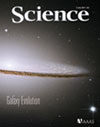 Microbiologist Rosa María Montes Estellés once infected a church mural with bacteria. But it was for a good cause: The bacteria ate their way through 4 centuries of grime encrusted on a mural at Santos Juanes Church in Valencia, Spain, exposing the underlying colors.Bacteria are only the latest tool in the art restorer’s arsenal. Restorers use microabrasion, burly bristles, and chemical washes to strip layers of pollution from buildings, statues, and paintings. But each method has shortcomings: They can put the underlying artwork at risk or poison workers, and they often require slow and painstaking manual labor. So in 2005, a group of Italian art restorers tried a new tack: They bred bacteria to remove an obstinate layer of collagen from the murals of Campo Santo di Pisa. At Santos Juanes, the offending material was a crusty white mixture of salt, sulfates, nitrates, and carbon, originating from centuries of rainwater mixing with deposits from nesting birds and insects in the roof above the murals. Over time, the material slid downward, encrusting the paintings, where it fermented together with atmospheric pollutants. Montes and colleagues at the Polytechnic University of Valencia selected and “trained” a nitrogen-loving type of bacteria, Pseudomonas stutzeri, to eat the noxious blend.
Microbiologist Rosa María Montes Estellés once infected a church mural with bacteria. But it was for a good cause: The bacteria ate their way through 4 centuries of grime encrusted on a mural at Santos Juanes Church in Valencia, Spain, exposing the underlying colors.Bacteria are only the latest tool in the art restorer’s arsenal. Restorers use microabrasion, burly bristles, and chemical washes to strip layers of pollution from buildings, statues, and paintings. But each method has shortcomings: They can put the underlying artwork at risk or poison workers, and they often require slow and painstaking manual labor. So in 2005, a group of Italian art restorers tried a new tack: They bred bacteria to remove an obstinate layer of collagen from the murals of Campo Santo di Pisa. At Santos Juanes, the offending material was a crusty white mixture of salt, sulfates, nitrates, and carbon, originating from centuries of rainwater mixing with deposits from nesting birds and insects in the roof above the murals. Over time, the material slid downward, encrusting the paintings, where it fermented together with atmospheric pollutants. Montes and colleagues at the Polytechnic University of Valencia selected and “trained” a nitrogen-loving type of bacteria, Pseudomonas stutzeri, to eat the noxious blend.
How to apply the bacteria was a challenge. After testing different materials, Montes and biologist Pilar Bosch chose a gel that keeps the bacteria wet and alive but doesn’t sink into the underlying paint. The team’s preliminary results will appear in a forthcoming issue of Arché. Meanwhile, Montes hopes to develop more and better treatments customized for different surfaces and pollutants.
First published as a Random Sample by Science Magazine: [html] or [pdf].